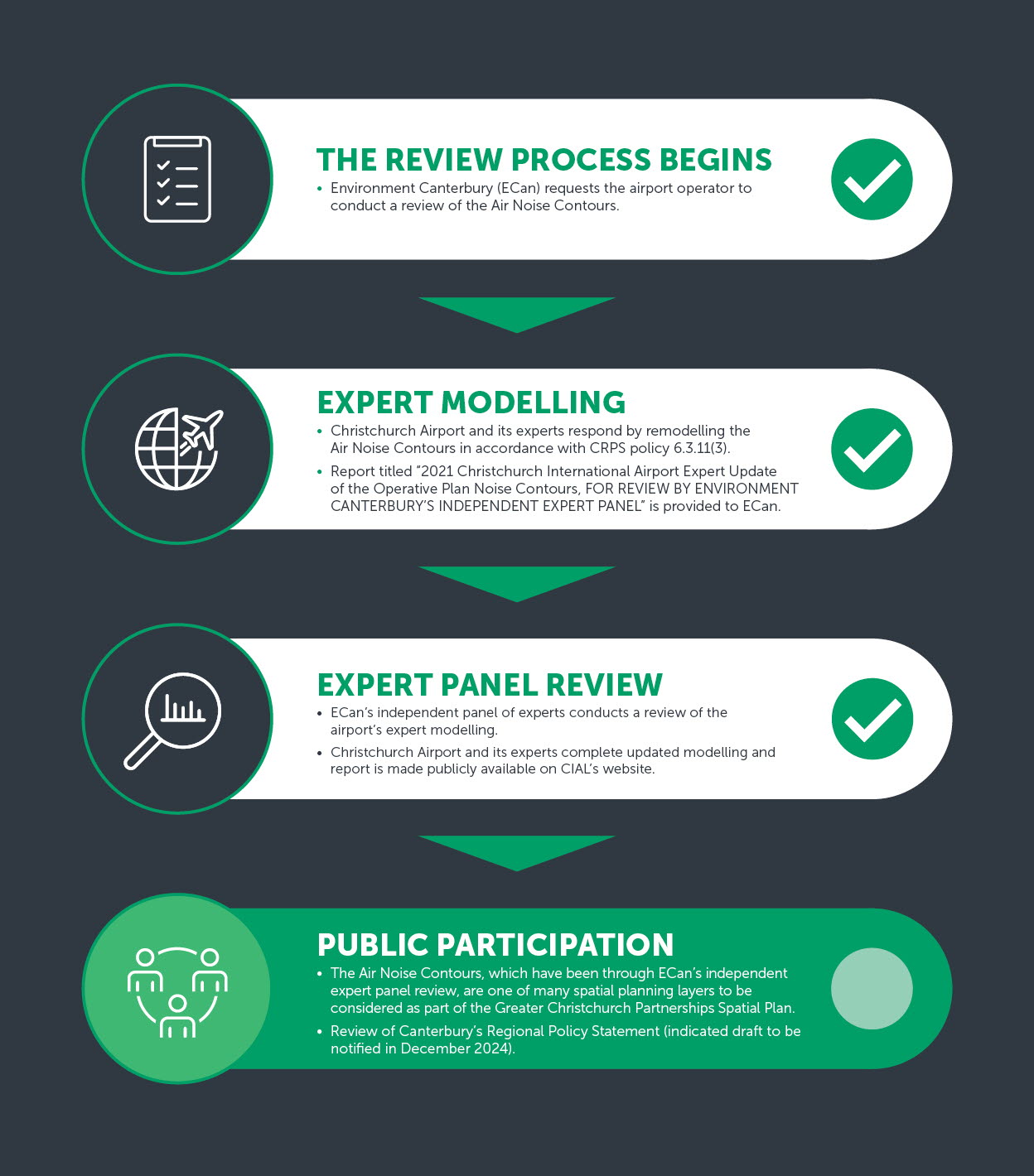Today’s decisions frame tomorrow’s opportunity
New Zealand is uniquely reliant on air connectivity – our geographically isolated islands sit at the bottom of the world and aviation is the most efficient way to move people and products to, from and around our country.
Christchurch Airport is New Zealand’s second busiest airport and one of only two that have the ability to accommodate wide-body planes and to operate 24 hours a day, 7 days a week.
Ensuring this important and multi-generational infrastructure asset can continue to serve future generations is critical to Canterbury’s and New Zealand’s economic and social well-being.
Noise contours are a key planning tool used at airports worldwide. Their intended purpose is to:
- Define the noise footprint an airport can operate in.
- Ensure regions grow in a way that is right for future generations. This means planning well to protect communities from aircraft noise (both now and in the future).
- Enable major airports to continue growing to meet the needs of the regions and countries they serve.
In 2021 Environment Canterbury, as the regional planning authority, formally requested that Christchurch Airport conduct a review of the existing noise contours that were produced in 2008. The following process has occurred:
- In November 2021, Christchurch Airport provided draft remodelled noise contours to Environment Canterbury. This was the result of a complex process involving input from multiple experts independent of Christchurch Airport.
- Between April 2022 and April 2023, Environment Canterbury’s independent expert panel peer reviewed the technical inputs and assumptions.
- This resulted in updated noise contours that illustrate the location and level of aircraft noise that will be experienced in Canterbury now and when airport operations grow to meet local, regional and national demand for passenger and freight services.
- The updated noise contours also reflect a once-in-a-generation global shift in aviation navigation, known as Performance Based Navigation (PBN). PBN has changed aircraft arrival and departure tracks resulting in improved safety, reduced carbon emissions, flight paths being directed away from urban areas and reduced operational costs.
You can see the 2023 updated noise contours, learn more about the process and read fact sheets on various aircraft noise-related matters:
- Full Report – 2023 Updated Christchurch International Airport Noise Contours
- Fact Sheet 1 – Introduction to Aircraft Noise
- Fact Sheet 2 – Introduction to Air Traffic Management and Air Traffic Control
- Fact Sheet 3 – Overview of the Air Noise Contour Remodelling and Peer Review Process
- Fact Sheet 4 – Outcome of the Peer Review Process – Updates to the 2021 Draft Updated Noise Contours
- September 2023 Addendum to the 2023 Updated Christchurch International Airport Noise Contours
